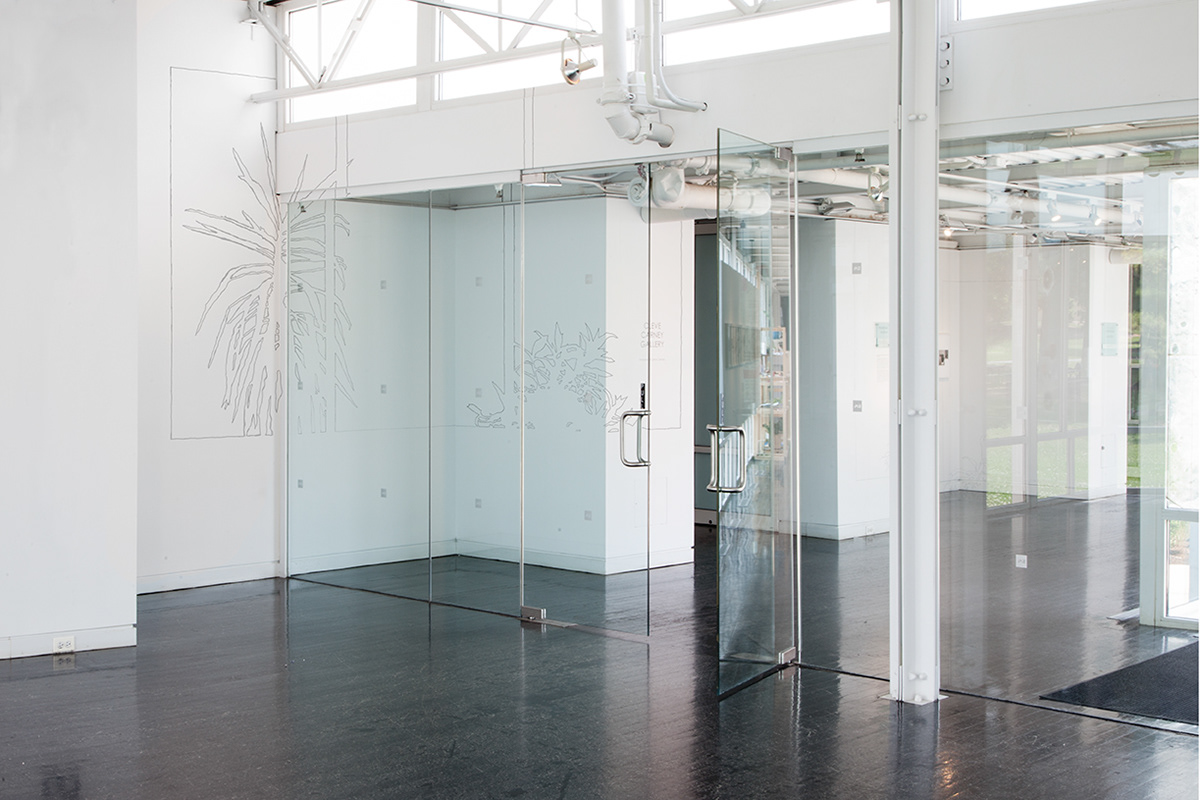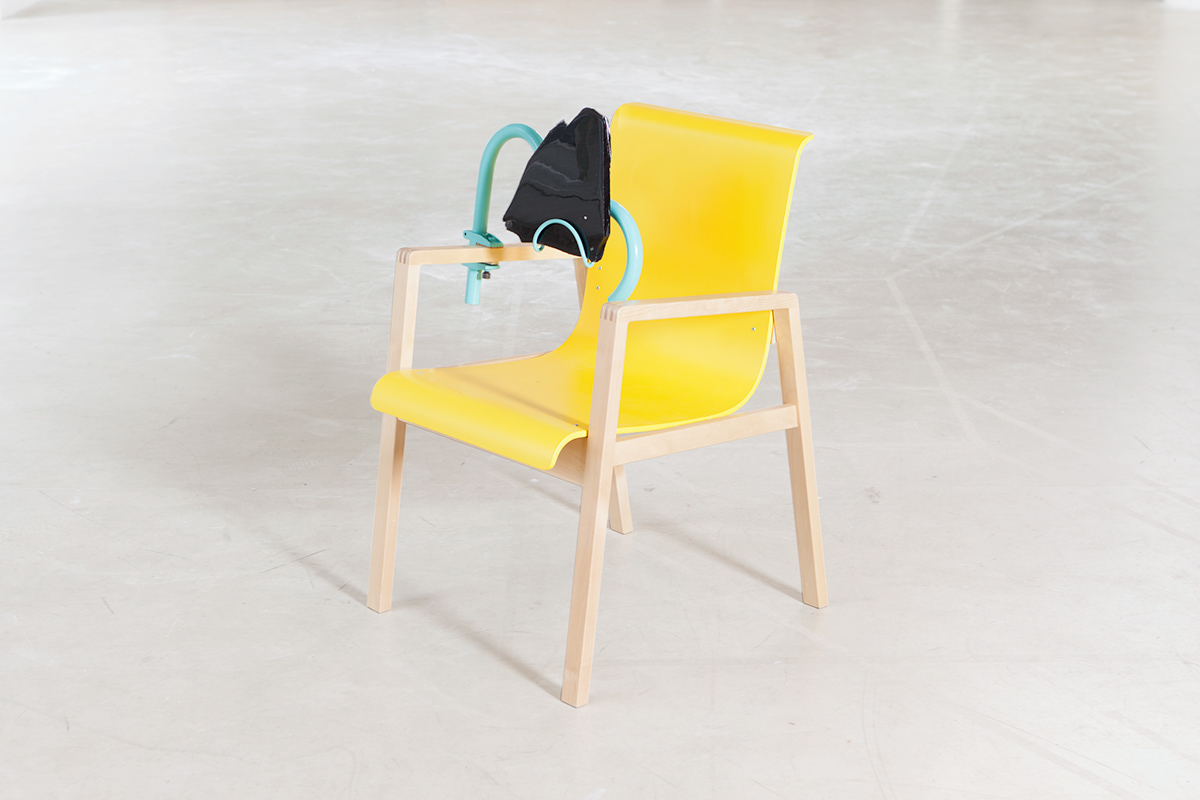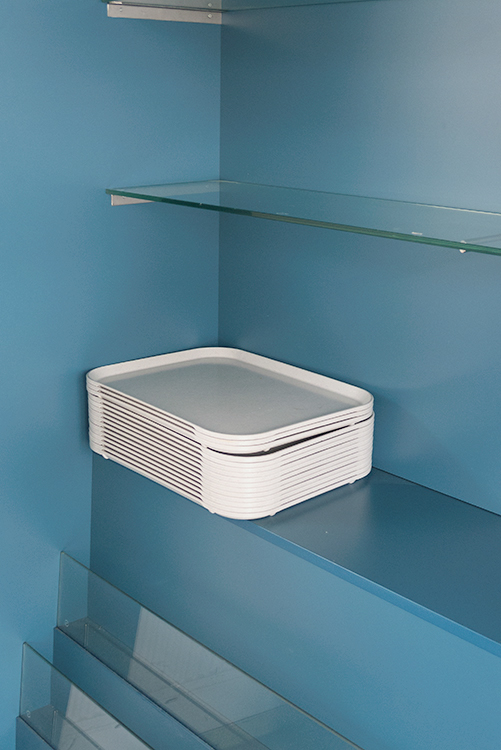
Paimio examines a moment of recalibration within the architectural history of the clinic. The Paimio Sanitorium (Turku, Finland), designed and completed by Alvar Aalto in the early 1930’s, was built to treat tuberculosis patients in a time when there was no definitive cure for the epidemic. Prolonged exposure to sunlight, fresh air, and vegetation were believed contribute to recovery, which informed the architect’s design strategy; the sanitarium's entire function was a focusing apparatus for these pre-existing natural phenomena. In Paimio, an armchair designed for the sanitarium carries an obsidian scrying mirror, a mesoamerican divination tool used to provide answers for uncertainties and potentialities. Black outlines wash across the walls of the installation space, which are tracings of the light coming through the windows of the Finnish sanitorium. The outlines operate as a marker of time and of occupancy; a demarcation of inside and out, and an attempt to bring the light of that time and space into the present.
Installation views at the Elmhurst Art Museum and Sullivan Galleries








DETAIL


DETAIL

DETAIL

DETAIL

